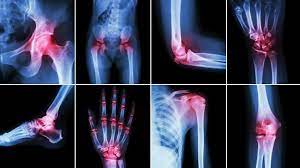Arthritis is an inflammatory disorder affecting one or more joints of the body. Inflammation is a condition where a part of the body becomes swollen, reddened, hot and painful. It is caused by injury, for instance, following an insect bite or infection, and sometimes, it is autoimmune, meaning the defense mechanisms of the body attack specific parts of the body, assuming it to be dangerous to the body. In arthritis, the affected joint or joints have all the signs of inflammation. It is also a result of trauma, infections and autoimmune disorders but may also be due to aging and sometimes unknown triggers.
Anatomy of a joint
A joint is a place where two bones meet. At that point, the bone is covered by a thick but very smooth tissue called cartilage. Between the joints, there is a slimy fluid called synovial fluid, whose role is to ensure that bones move smoothly over each other without rubbing and becoming raw. In arthritis, there is a breakdown of cartilage, meaning the bones at the joint can no longer move smoothly over each other, thereby leading to friction. The rubbing results in pain, swelling and stiffness at the joint and eventual muscle strain due to difficulty in moving the joint. Arthritis symptoms tend to worsen with age.
There are six main types of arthritis
Osteoarthritis is characterized by the disintegration of large joints such as the knee and the hip.
Gouty arthritis, commonly referred to as gout is caused by crystals of uric acid being deposited in the joints. It is common among heavy eaters of meat and alcohol and mainly men. The joint of the large toe is most often affected.
Rheumatoid arthritis is an autoimmune disease that affects the smaller joints such as hands and feet first, before affecting larger joints. It manifests symmetrically, meaning if one joint is affected, the opposite similar joint also gets affected.
Juvenile arthritis comprises many forms of arthritis affecting children and adolescents below the age of 16 years.
Psoriatic arthritis affects people with the skin disease psoriasis.
Ankylosing spondylitis affects the vertebra, causing pain in the backbones and limited spinal and chest wall movements. READ MORE
















